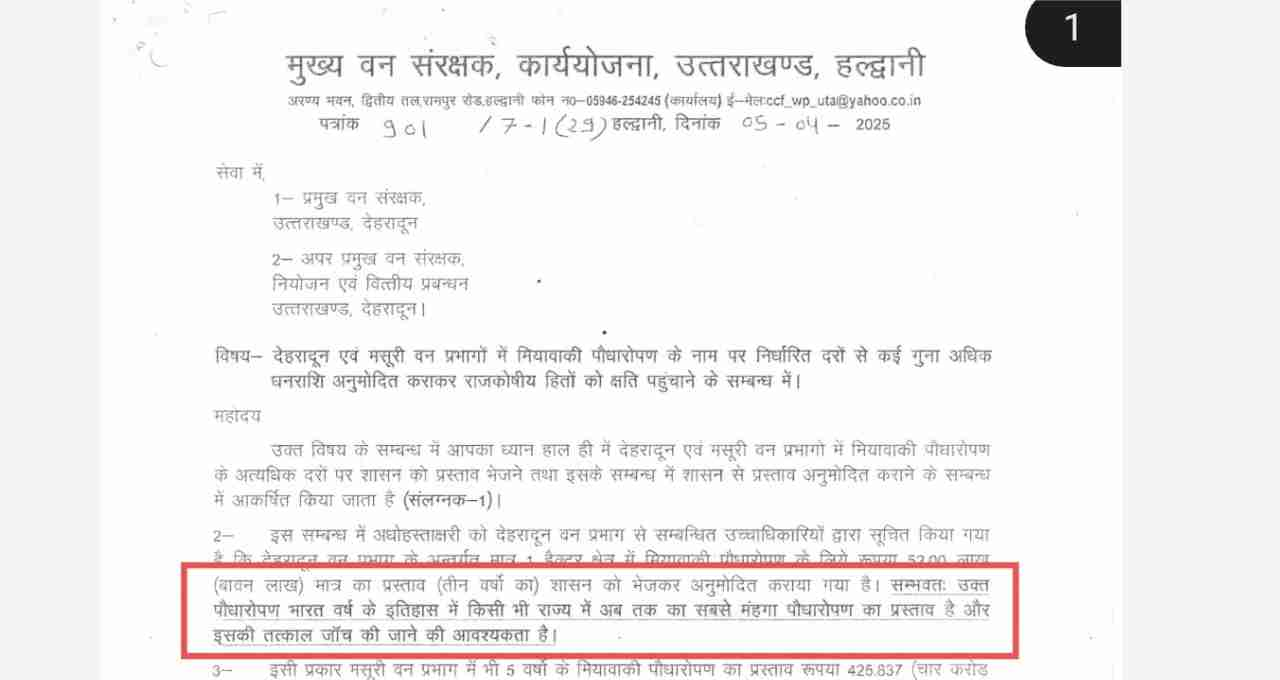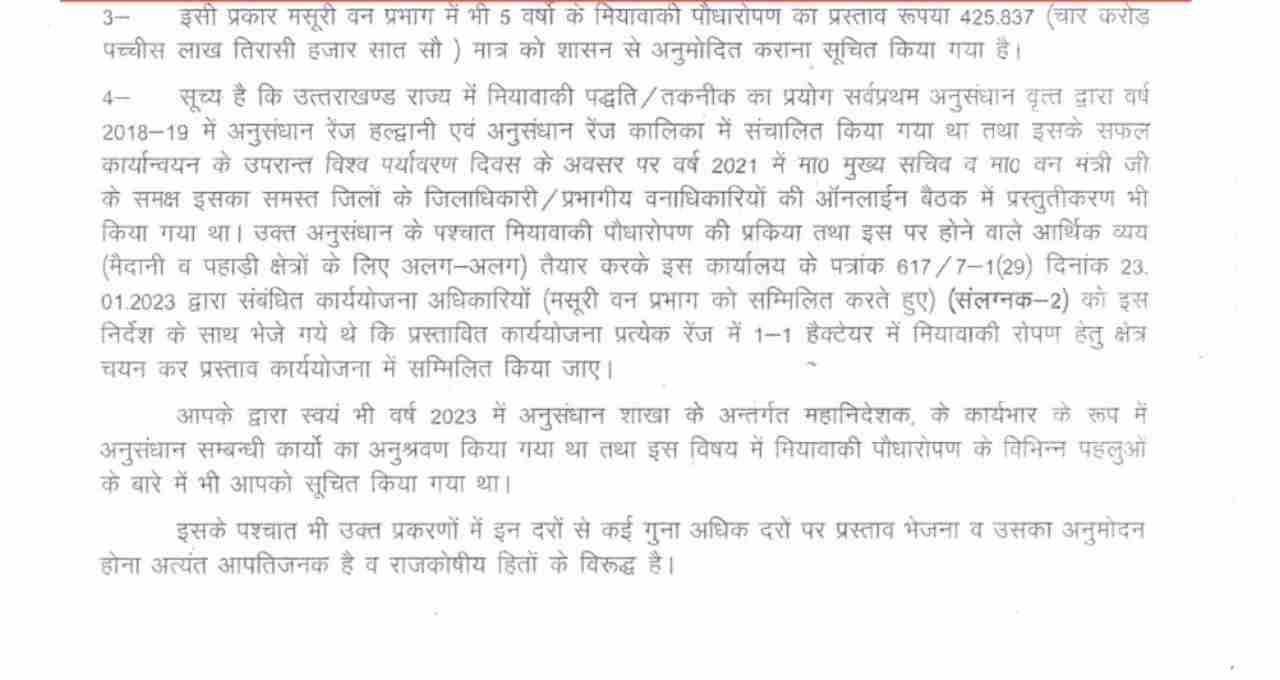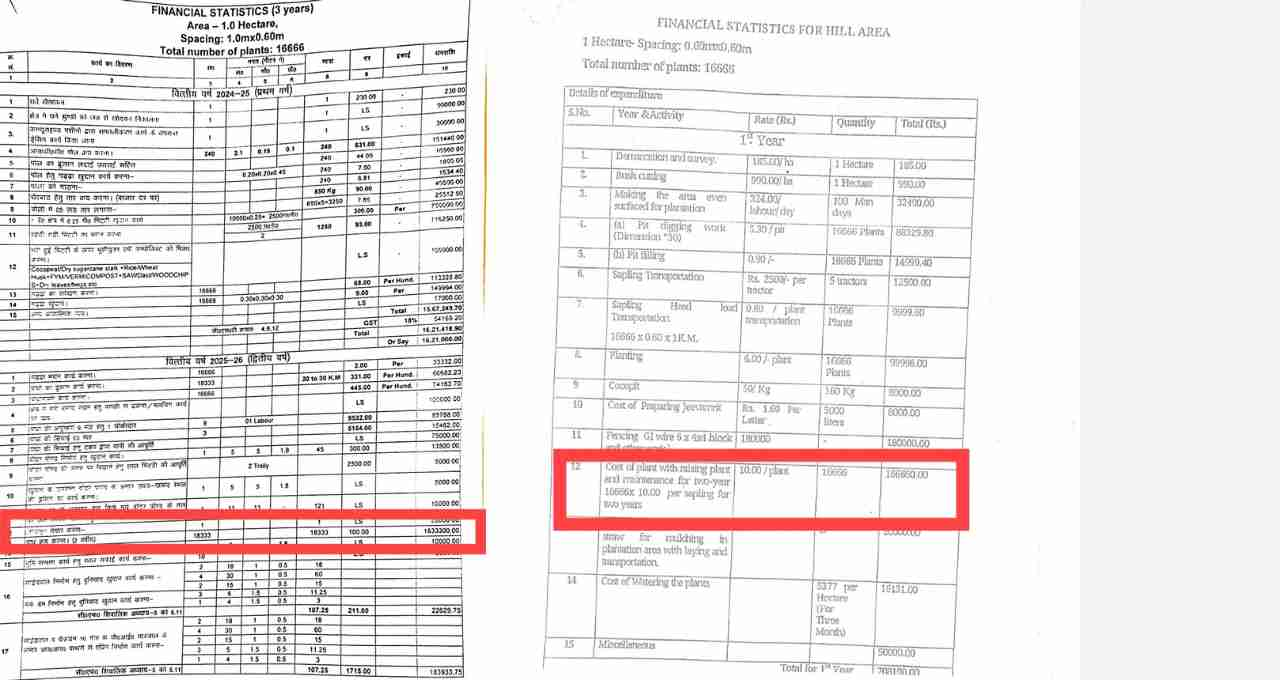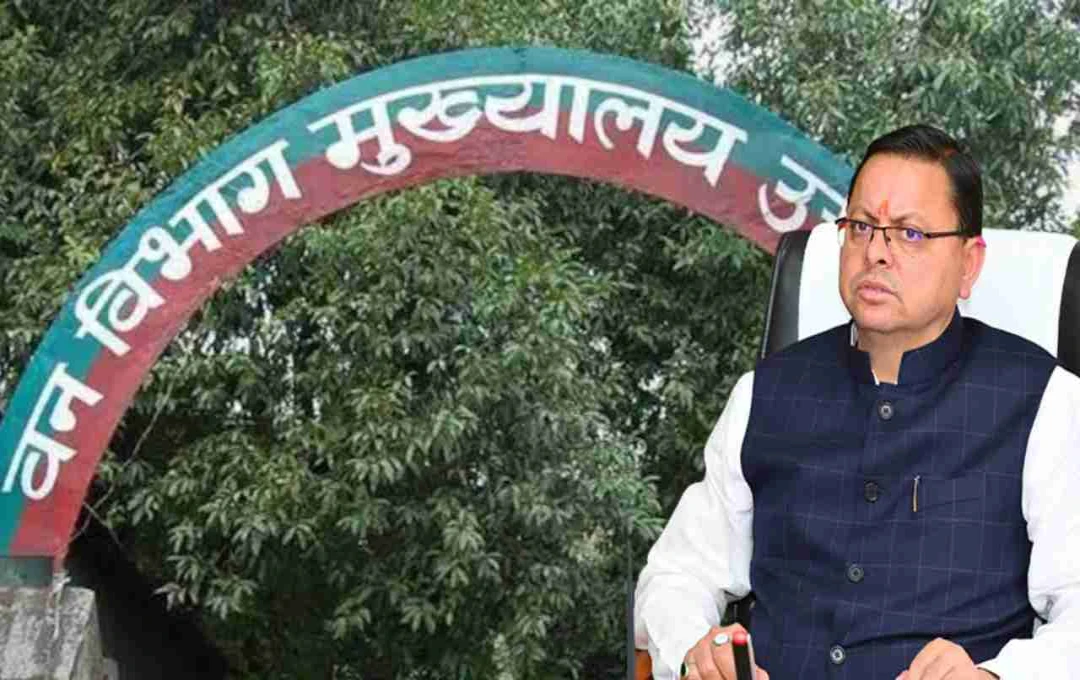Allegations of a Sapling Plantation Scam in Uttarakhand's Forest Department
Uttarakhand: Serious allegations of corruption are being leveled against the Uttarakhand Forest Department, a department overseeing a state of significant environmental importance. Questions have arisen regarding the expenses incurred in a Miyawaki method sapling plantation project in the Jhajhra area of Dehradun district. A letter from the Chief Conservator of Forests (Planning), Sanjeev Chaturvedi, to the Principal Chief Conservator of Forests brought this matter to light.
A Tenfold Increase in Sapling Cost
The Jhajhra project reported an expenditure of ₹18.33 lakh for 18,333 saplings, at a cost of ₹100 per sapling. However, the same saplings were planted in the Kalsi project in 2020 at a cost of ₹10 per sapling. This significant difference in cost, despite the same department and methodology, has raised serious concerns.
Tenfold Difference in Expenditure: Why?


The Jhajhra project proposed an expenditure of ₹52.40 lakh per hectare for three years using the Miyawaki method. In contrast, the Kalsi project in 2020, using the same technique, cost only ₹11.86 lakh per hectare. This vast difference raises serious questions about the Forest Department's operational practices.
What is the Miyawaki Technique?
The Miyawaki method, developed by Japanese Professor Akira Miyawaki, is a technique for creating dense, natural, and biodiverse forests in a short period. This technique involves planting native species close together to replicate the structure of a natural forest.
Mussoorie Project: Cost Exceeds Four Crores
The Mussoorie Forest Division also proposed a five-year Miyawaki method plantation project with an estimated cost of ₹4.26 crore for 6 hectares of land. According to technical standards, the cost should have been a maximum of ₹84 lakh. This proposal is five times higher than the estimated cost.
Large Proposals Without Pilot Projects
Sanjeev Chaturvedi's letter clarifies that, according to regulations, a one-hectare pilot project is mandatory before any large-scale plantation proposal. However, this procedure was not followed in the Mussoorie and Dehradun divisions, raising suspicions that large proposals were submitted directly, bypassing regulations.
Why Procure Saplings Externally When the Department Has its Own Nurseries?
The Forest Department has its own technically capable nurseries. Therefore, the purchase of expensive saplings from an external agency for the Jhajhra project further adds to the suspicion surrounding the matter.

Anomalies in Fencing and Pit Filling Costs
The expenditure for fencing is shown as ₹1.57 lakh per hectare, significantly exceeding technical standards. Similarly, the pit filling rate is ten times higher than in 2020. The rate was ₹0.90 per sapling in Kalsi, while in Jhajhra, it is shown as ₹9 to ₹12 per sapling.
Non-Compliance with Miyawaki Technique
The Mussoorie and Dehradun Forest Division proposals indicate only 4 to 6 saplings per square meter, far fewer than the Miyawaki technique recommends. This technique prioritizes density for rapid natural forest development. This raises doubts about whether the proposed plantation meets technical standards.
Lessons from Previous Projects Not Learned
The Kalsi project was deemed successful and exemplary by DG Forest C.P. Goyal, who suggested its replication nationwide. Despite this, subsequent projects focused on increasing costs rather than learning from this model.
Social Activist Response
Social activist Anoop Nautiyal has called for a factual review and transparent investigation into the cost differences. He demands strict action against those found guilty of irregularities and measures to prevent such cost discrepancies in the future.














